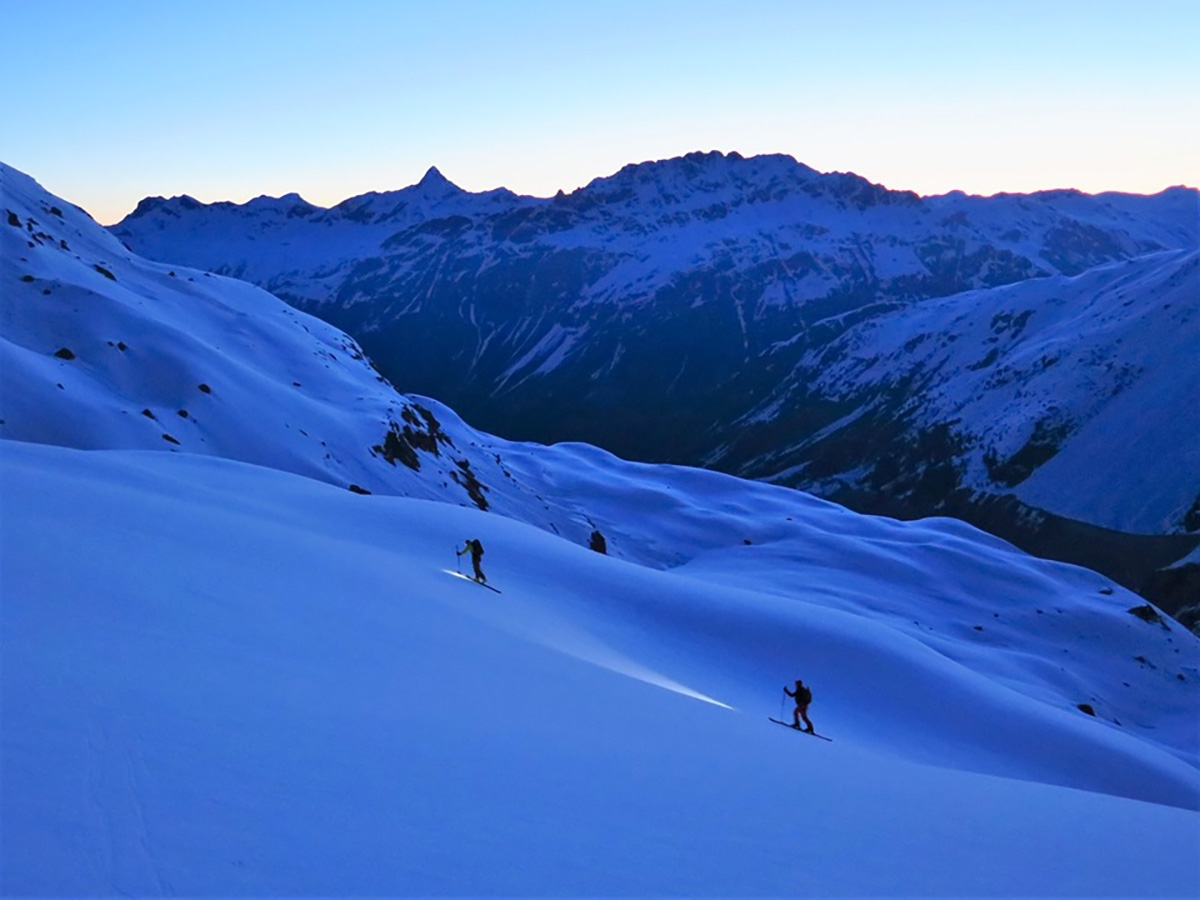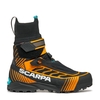Piz Morteratsch in Switzerland, East Face ski descent by Costa, Terraneo, Varchetti

 1 / 8
1 / 8 Davide Terraneo
Davide Terraneo
Piz Morteratsch is a complex mountain and, at 3751m in height, it is the highest peak entirely in Swiss territory in the the Bernina range. The North Ridge serves as a watershed to the Roseg and Morteratsch valleys, the NE Face provides a rocky spur with a large serac, while the vast East Face with its ENE Face is barred down low by a serac. These are followed by Cresta della Speranza and the impervious SE Face. The rocky and steep SE Ridge also acts as a watershed to the Tschierva and Boval basins, while Piz Prievlus joins the famous Biancograt. A deep gully cuts down the South Face, to the right of the SW Spur, the broad West Face and, last but not least, the NW Spur.
The first ascent of Piz Morteratsch dates back to 1858 via its glacial northern aspect, and by 1911 all the other classic routes had been climbed except for the NW Sspur, which was breached in 1964. After that all new routing ground to a halt, until 2009 when Italy's Luca Maspes and climbing partners ascended the virgin SE Face. I have found no details regarding ascents or descents via the mountain’s West Face, but this was possibly achieved by a Swiss team in the nineties (to be verified).
Piz Morteratsch can be climbed all year round, in summer along its normal route and Cresta della Speranza, in winter via two marvellous ski mountaineering routes that start from either Capanna Tschierva or Capanna Boval before joining each other on the glacial North ridge.
The ENE Face where we planned to experience our skiing adventure was first climbed way back in 1911 by Julius Frohmann with the guides Christian Zippert and Niklaus Kholer, when the lower section of the serac was probably a steep crevassed glacier and the upper rocky bastion a snowy slope. Mountains are obviously subject to continuous transformation and nowadays the upper section is a rocky bastion, while the lower section a rounded serac.
From Diavolezza the line appears logical and beautiful and for a long time we dreamt about shredding down those slopes, during a certain time of year when the snow settles and transforms.
Apart from the usual uncertainties linked to this sort of enterprise, the major logistical problem was the serac. Would it bar our way? Would we perhaps manage to climb up it, and then be forced to rappel down?
The photos of a rare repeat carried out in autumn 2014 by Valentino Cividini and his friends indicated some black ice, while the webcam "zoomed" to the max revealed nothing more than a large white patch. Given the particular conditions this winter and based on what we’d skied so far we decided to give it a go; Davide Terraneo, Mattia Varchetti and I set off in search for the "line" that could never be found from home!
We left the car at last light with the mountains wrapped in clouds, there was no way of studying the face with our binoculars so off we went. At midnight we reached Capanna Boval from where we departed four hours later. Dawn set the serac ablaze and revealed which way to go, with our skis!
Normally in the mountains when you reach the summit the descent is something that’s carried out quickly, something that’s done without much ado. With skis though things are very different indeed, for when you’re at the top you finally get to do what you came here for. Skiing also changes another fundamental aspect in the mountains, speed!
We skied all the way down to the Boval hut from the summit without ever having to take our skis off. We were happy and, just like every time when things run smoothly, we understood why we enjoy doing these things. Because it's so beautiful to be up there in the mountains!
by Saro Costa



 Copia link
Copia link







 See all photos
See all photos























